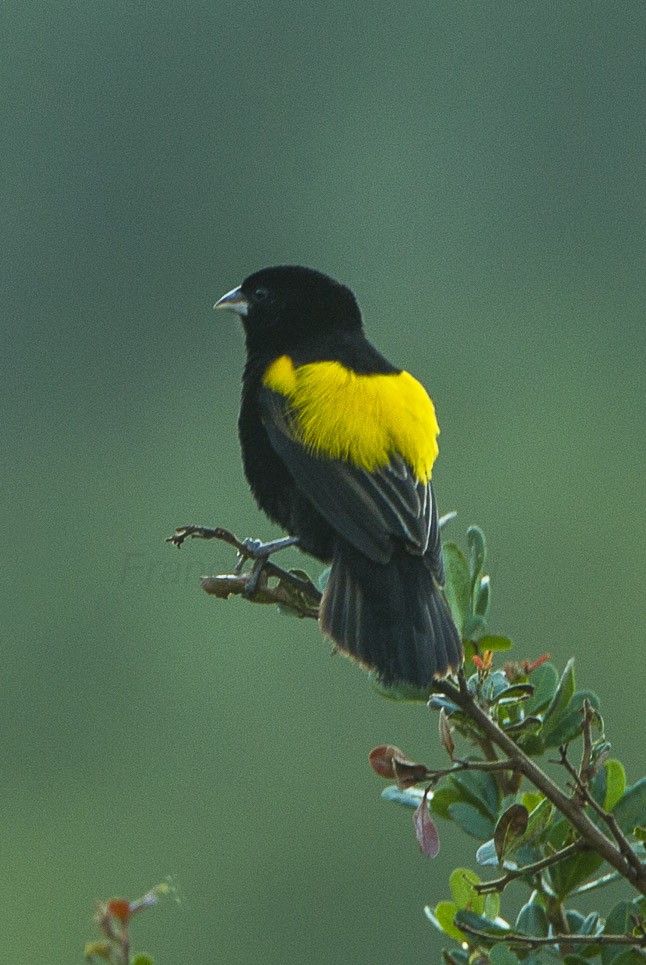Yellow Bishop
A species of Bishops and widowbirds, Also known as Cape Widow-bird Scientific name : Euplectes capensis Genus : Bishops and widowbirds
Yellow Bishop, A species of Bishops and widowbirds
Also known as:
Cape Widow-bird
Botanical name: Euplectes capensis
Genus: Bishops and widowbirds
Content
Description General Info
 Photo By Francesco Veronesi , used under CC-BY-SA-2.0 /Cropped and compressed from original
Photo By Francesco Veronesi , used under CC-BY-SA-2.0 /Cropped and compressed from original Description
The yellow bishop is a stocky 15 centimetres (5.9 in) long bird. The breeding male is black apart from his bright yellow lower back, rump, and shoulder patches, and brown edging to the wing feathers. He has a short crest, thick conical black bill, and a relatively short tail. His bill size varies dramatically between races. In non-breeding plumage, the black plumage is replaced by heavily streaked buffy-brown, and the bill is pale. The yellow shoulders and rump remain, and are a distinction from the female which lacks the contrasting colour patches. The juveniles and females are notoriously difficult to identify in the field, appearing identical to the juveniles and females of several other bishops and widowbirds as well as some seadeaters. In the breeding season they are usually solitary or in pairs, but the non-breeding yellow bishop is gregarious, often forming flocks with other 'mixed euplectes'. They feed on seed, grain and some insects. 
Size
15 cm
Nest Placement
Shrub
Feeding Habits
Yellow Bishop primarily consumes seeds, including grass seeds, maize, rice, and millet. Seasons change its diet to largely insectivorous, feasting on caterpillars, bugs, termites, and ants. It forages on the ground or from perches, sometimes investigating cowpats for insects, typically foraging alone or in pairs, and forming flocks in the non-breeding season.
Habitat
The yellow Bishop primarily resides in montane grasslands across broader eastern Africa, extending into various habitats such as coastal regions, cultivated lands, macchia, areas with dense streamside vegetation, forest edges, and mountain fynbos. This species is versatile in its habitat choice, but shows a predilection for regions with grass-dominated ecosystems.
Dite type
Granivorous
General Info
Feeding Habits
Bird food type
Species Status
Not globally threatened.
Scientific Classification
Phylum
Chordates Class
Birds Order
Perching birds Family
Weavers Genus
Bishops and widowbirds Species
Yellow Bishop